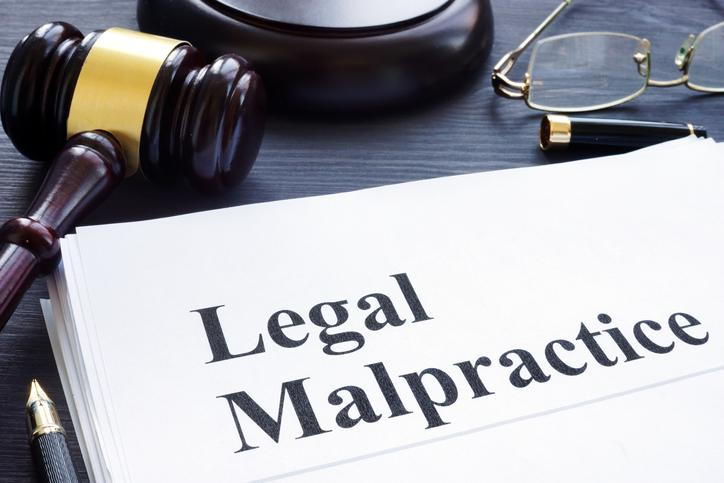Introduction:
Legal malpractice refers to a situation where a lawyer fails to perform their duties to a client in accordance with the accepted standards of practice, resulting in harm or damage to the client. This type of negligence or error can take many forms, ranging from missed deadlines to improper legal advice, and it can have serious consequences for both the client and the attorney involved. Legal malpractice claims are filed when a client believes that their attorney’s actions (or lack of action) directly caused harm to their case or legal position.
In this article, we will explore the core elements of legal malpractice, common types of malpractice claims, and how clients can protect their interests when considering legal representation.
Table of Contents
What is Legal Malpractice?
Legal malpractice occurs when an attorney acts negligently, makes an error, or fails to meet the standard of care expected of them, leading to a negative outcome for the client. In a legal malpractice case, the client typically argues that had the attorney acted properly, the result of the case would have been different. Legal malpractice can happen in a wide range of legal practices, including personal injury, business law, family law, criminal defense, estate planning, and more.
Key Elements of Legal Malpractice
To succeed in a lawbugs.com/ claim, the plaintiff (the client) generally needs to prove several key elements:
1. Existence of an Attorney-Client Relationship
For a malpractice claim to exist, there must be a formal attorney-client relationship. This relationship is established when an attorney agrees to represent a client in a legal matter. Without this relationship, a claim for legal malpractice may not be valid.
2. Breach of Duty of Care
The attorney must owe a duty of care to the client. This duty includes providing competent, diligent, and knowledgeable representation. If the attorney fails to meet the required standard of care, this may be considered a breach. The client must demonstrate that the attorney’s conduct fell below the acceptable standard of practice in their particular field.
3. Causation
The client must show that the attorney’s breach of duty directly caused harm to their case or legal situation. In other words, the client must prove that if the attorney had acted correctly, the outcome would have been more favorable.
4. Actual Damage or Harm
A legal malpractice claim requires that the client suffered actual harm as a result of the attorney’s negligence. This could include financial losses, negative impacts on their case, or other tangible consequences.
Common Types of Legal Malpractice Claims
Legal malpractice claims can arise from various scenarios where an attorney’s conduct is below the required standard. Some of the most common types of legal malpractice include:
1. Missed Deadlines
One of the most common forms of legal malpractice is a missed filing deadline. Legal cases often involve strict timeframes for filing documents, motions, or appeals. If an attorney fails to file a document or legal motion on time, the client may lose their case or their opportunity to seek legal remedies.
-
Example: An attorney misses the deadline to file a personal injury lawsuit, and the client’s case is dismissed as a result.
2. Conflicts of Interest
Attorneys have an ethical obligation to avoid conflicts of interest that could affect their representation of clients. If an attorney represents multiple clients with competing interests or fails to disclose a conflict, they may be liable for malpractice.
-
Example: An attorney representing two parties in a divorce case who have conflicting interests may be found to have a conflict of interest, leading to a malpractice claim.
3. Inadequate Legal Advice
If an attorney provides poor or incorrect legal advice that harms the client’s case, it can lead to a legal malpractice claim. This includes offering incorrect interpretations of the law or failing to inform the client of critical legal risks or opportunities.
-
Example: A tax lawyer advising a client on how to file taxes in a way that results in penalties or fines due to incorrect advice.
4. Failure to Investigate
Attorneys are expected to thoroughly investigate the facts of a case and gather relevant evidence. If an attorney fails to investigate adequately or misses key pieces of evidence, it may be grounds for a malpractice claim.
-
Example: A criminal defense lawyer fails to investigate a potential alibi, leading to the conviction of an innocent client.
5. Failure to Communicate
Attorneys have an obligation to keep their clients informed about the status of their case. Failing to communicate, whether by not responding to emails or phone calls, or by not informing the client of significant developments, can lead to malpractice claims.
-
Example: A client may not be told about a settlement offer or an important legal decision that impacts the outcome of their case.
6. Negligence in Drafting Documents
Improperly drafted legal documents—such as contracts, wills, or corporate agreements—can lead to unintended consequences and financial losses. If an attorney fails to draft legally sound documents, they may be responsible for legal malpractice.
-
Example: A real estate attorney drafts a deed with unclear or incorrect language, causing confusion or disputes over property ownership.
7. Mishandling Funds
Attorneys who handle client funds, such as settlement money or trust funds, have a fiduciary duty to manage them appropriately. If an attorney mishandles client funds, such as through theft, misappropriation, or failure to distribute funds correctly, it can result in both legal malpractice and criminal liability.
-
Example: A lawyer improperly withdraws money from a client’s trust account for personal use.
Defending Against Legal Malpractice Claims
Attorneys may defend themselves against malpractice claims by asserting several potential defenses, including:
1. No Breach of Duty
The attorney may argue that their actions were appropriate, reasonable, and in line with the standard of care expected in the legal field. They may assert that they did not breach their duty of care, and the client’s claims are without merit.
2. Causation Issues
The attorney might argue that even if there was a mistake or error, it did not directly cause the client’s harm. They may assert that the client would have suffered the same outcome regardless of their actions.
3. Contributory Negligence
In some cases, the attorney may argue that the client’s own actions or inactions contributed to the negative outcome, thereby reducing the attorney’s liability.
4. Statute of Limitations
In some jurisdictions, there is a statute of limitations for filing legal malpractice claims, which is typically a few years from the date of the alleged malpractice. If a client waits too long to file their claim, the attorney can argue that the claim is time-barred.
How to Protect Yourself From Legal Malpractice
If you are a client concerned about the possibility of legal malpractice, there are steps you can take to protect yourself:
1. Choose an Experienced Attorney
When hiring an attorney, ensure they have the necessary experience in the area of law relevant to your case. Research their background, read client reviews, and ask for referrals from trusted sources.
2. Communicate Regularly
Stay in regular communication with your attorney to ensure that you are up-to-date on your case. Don’t hesitate to ask for clarification if something is unclear, and make sure your attorney is responsive to your inquiries.
3. Keep Detailed Records
Keep a comprehensive record of your interactions with your attorney, including emails, phone calls, and written documents. This can help you document the quality of your representation and provide evidence in the event of a dispute.
4. Ask Questions
If something doesn’t seem right or you feel uncertain about your case, ask your attorney for clarification. A good lawyer will always be willing to explain their actions and the reasoning behind their decisions.
5. Understand Your Case
Make sure you have a clear understanding of the legal process and the potential outcomes of your case. If your attorney is not adequately explaining things to you, consider seeking a second opinion.
Conclusion
Legal malpractice is a serious issue that can have significant consequences for both clients and attorneys. If an attorney fails to meet the professional standards of care, it can lead to harm or damage to the client’s case, and the client may have grounds for a legal malpractice claim. It is important to understand the key elements of legal malpractice and be vigilant about the quality of legal services you receive. If you believe you have been a victim of legal malpractice, seeking guidance from another experienced attorney who specializes in legal malpractice can help you explore your options for pursuing a claim.




